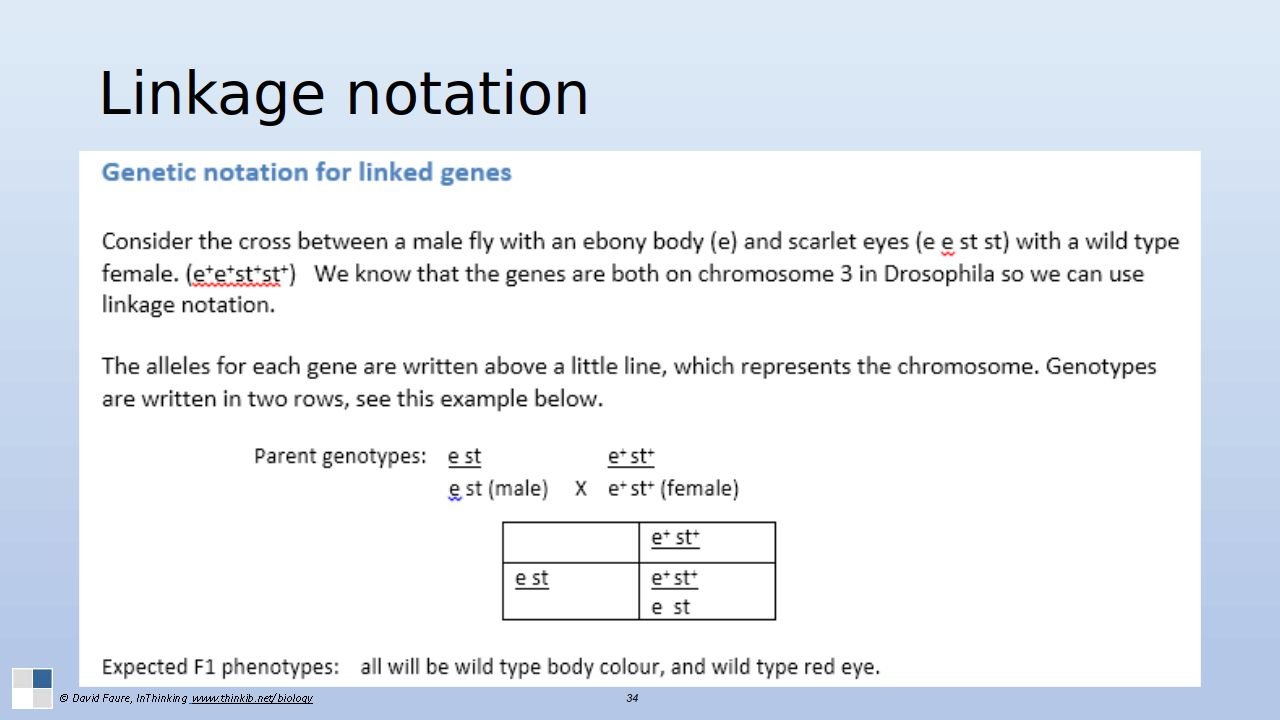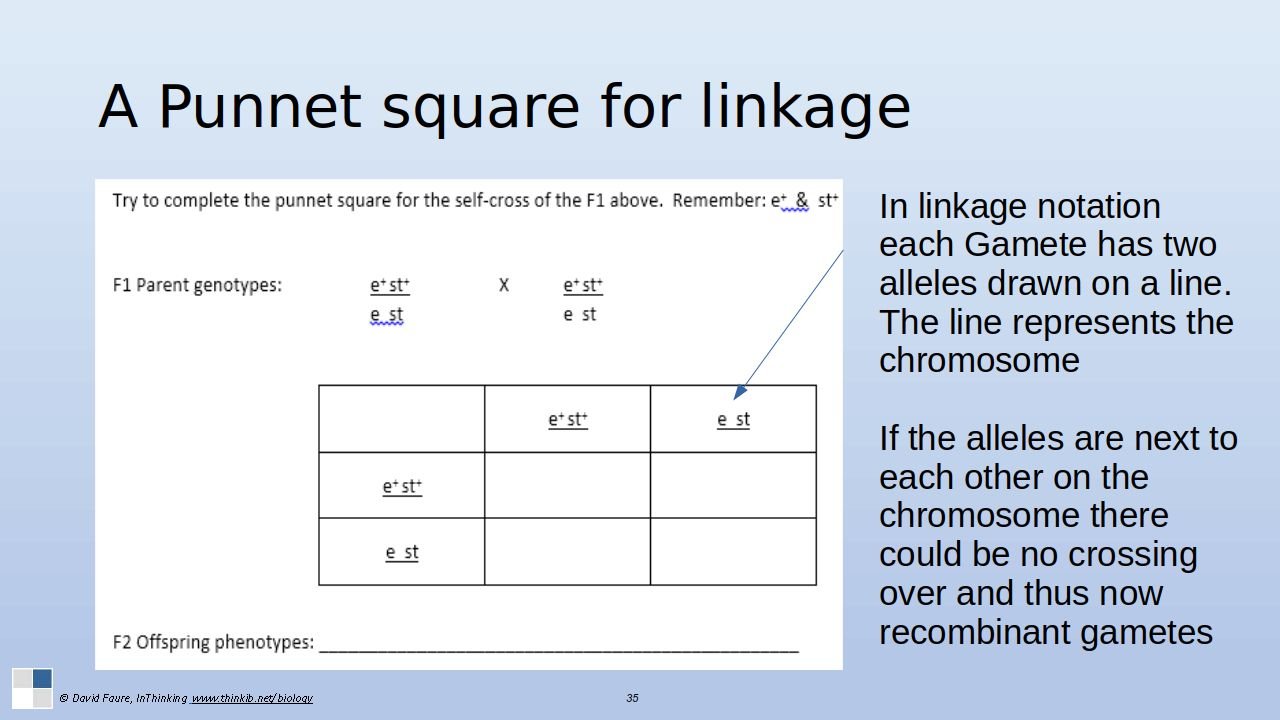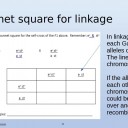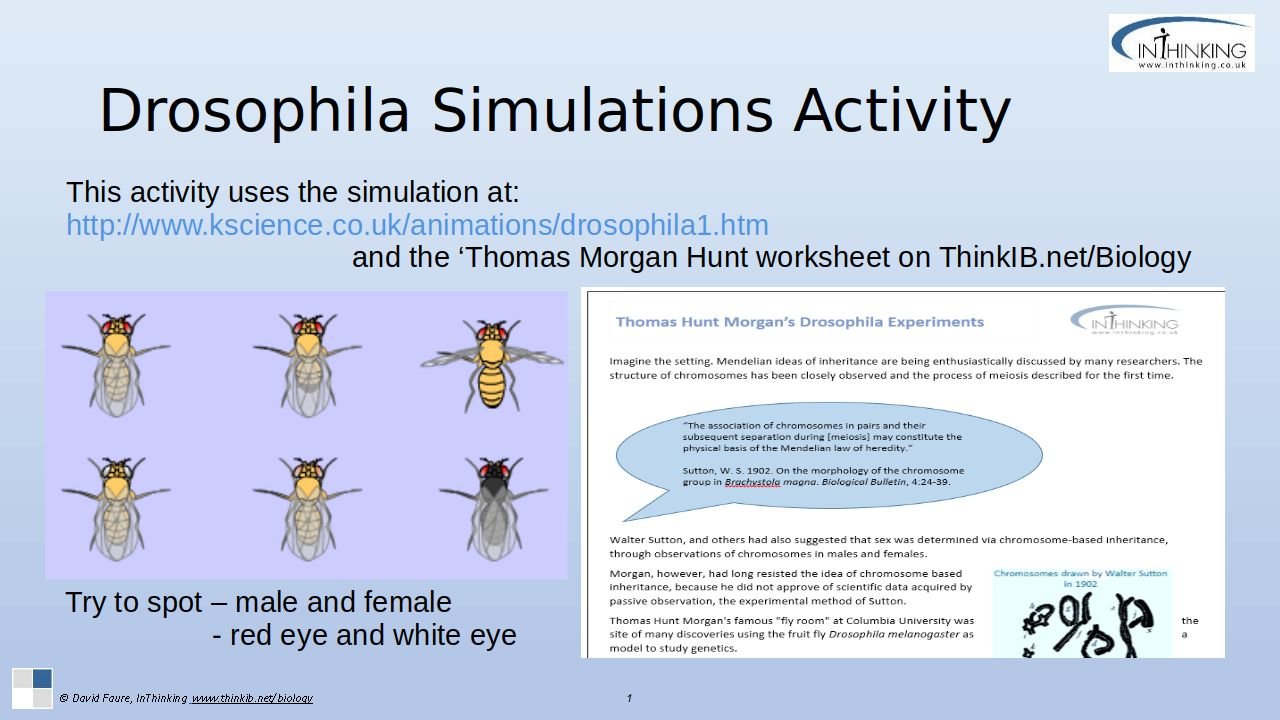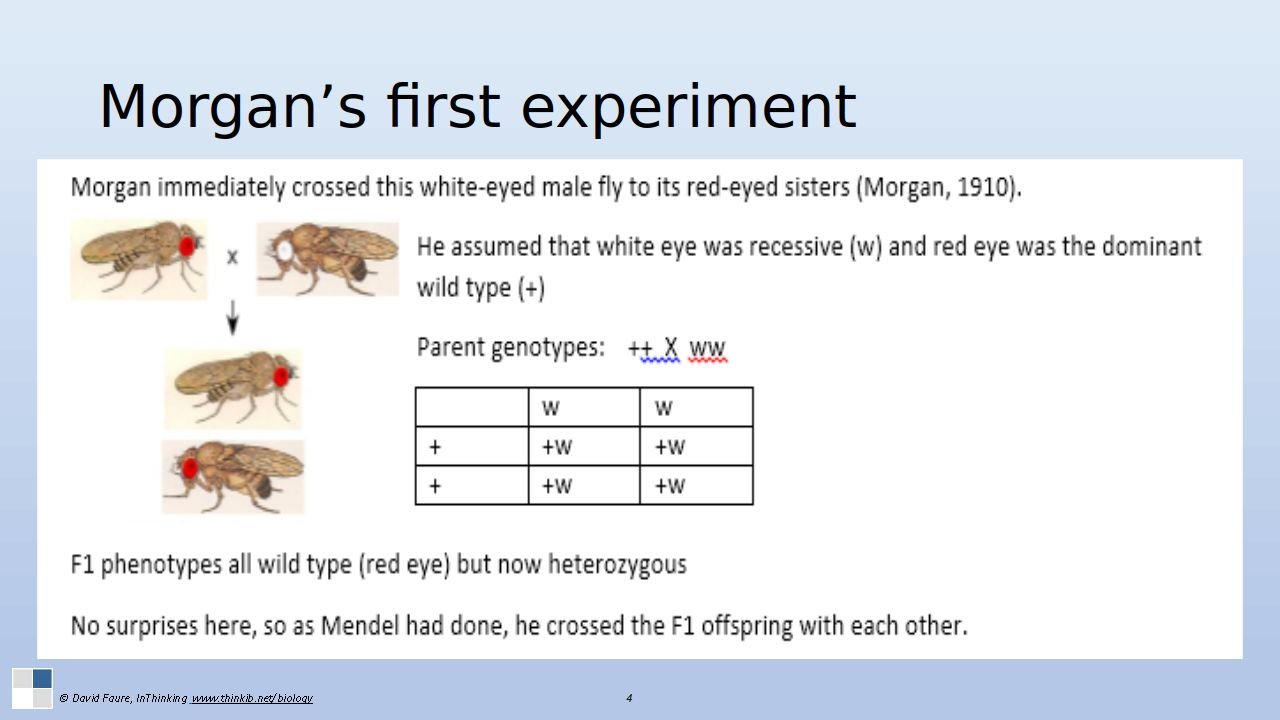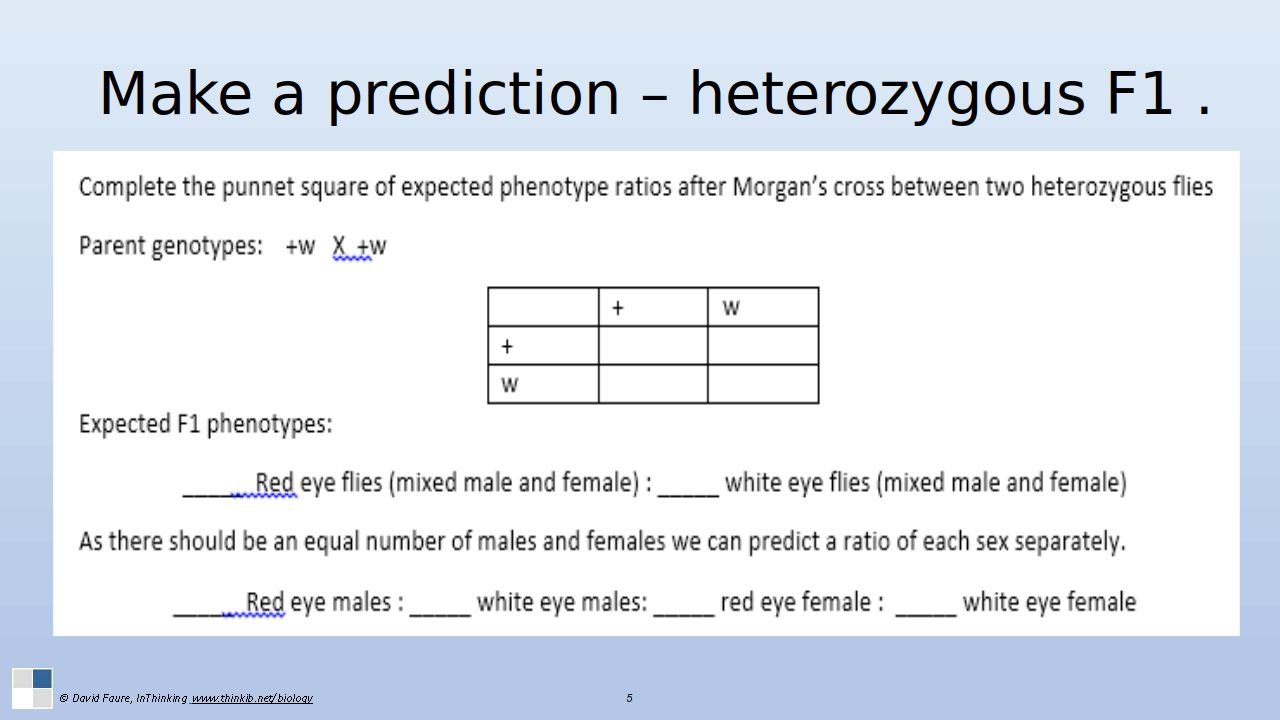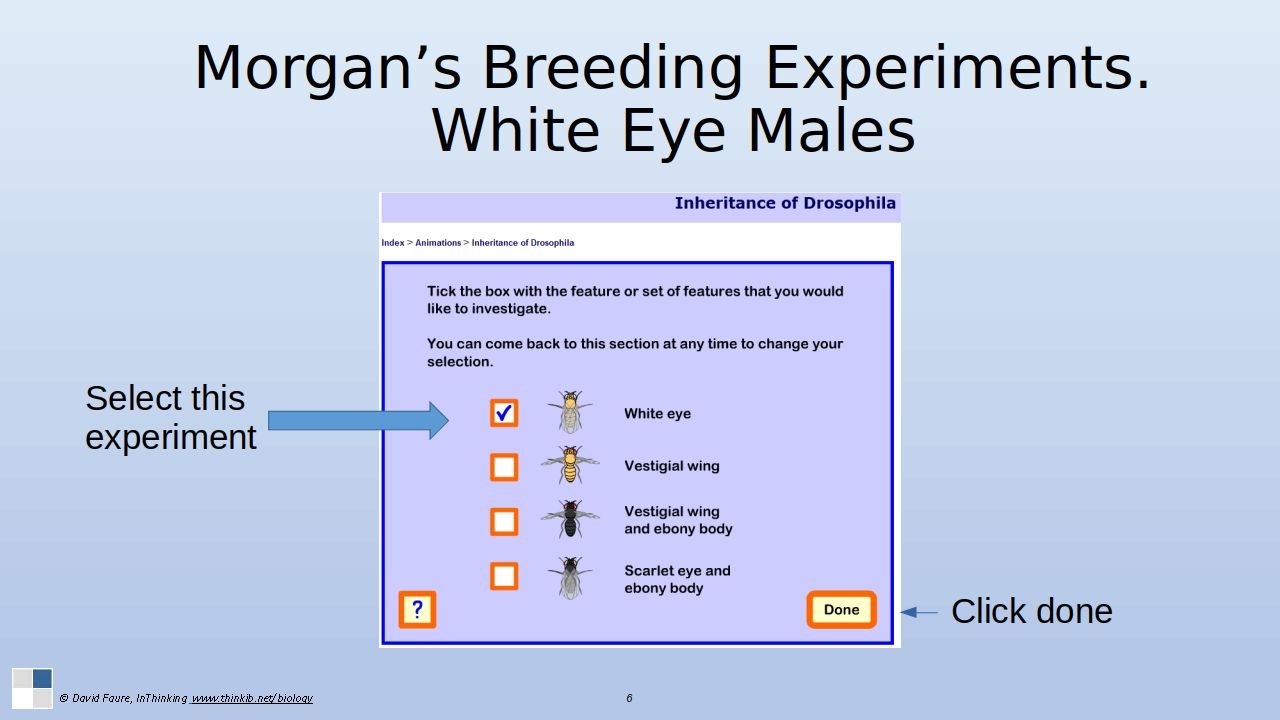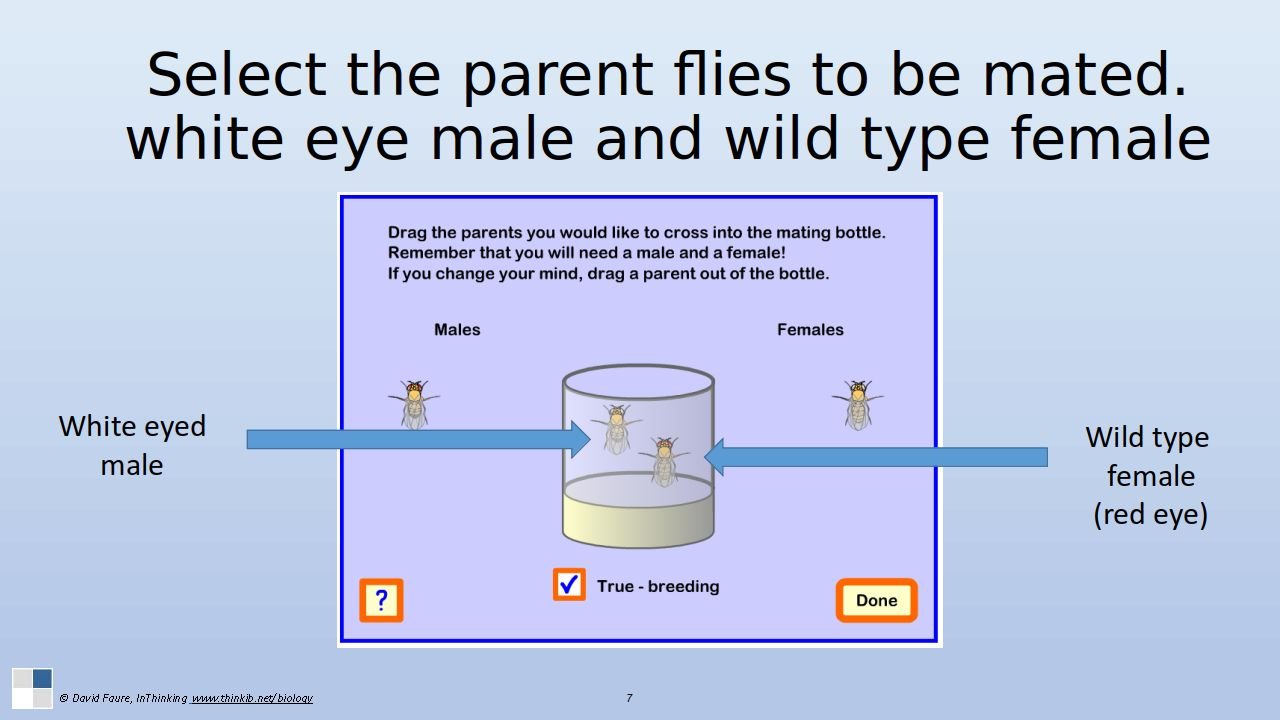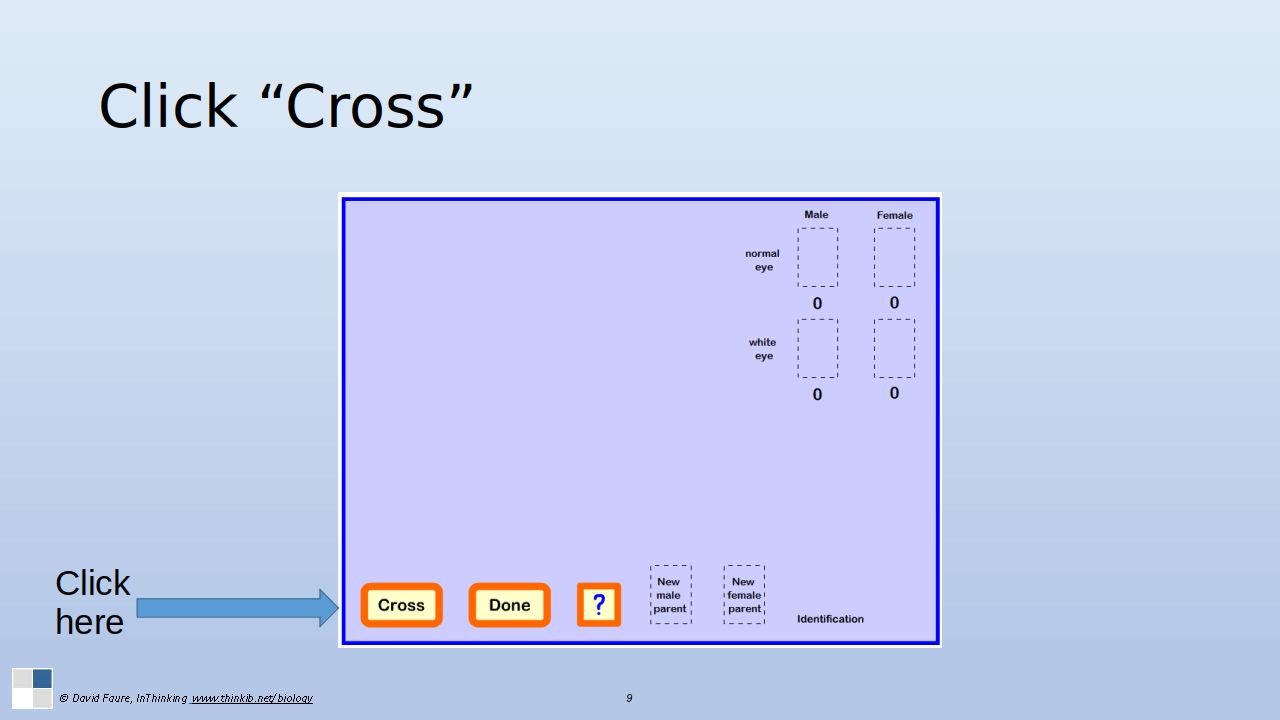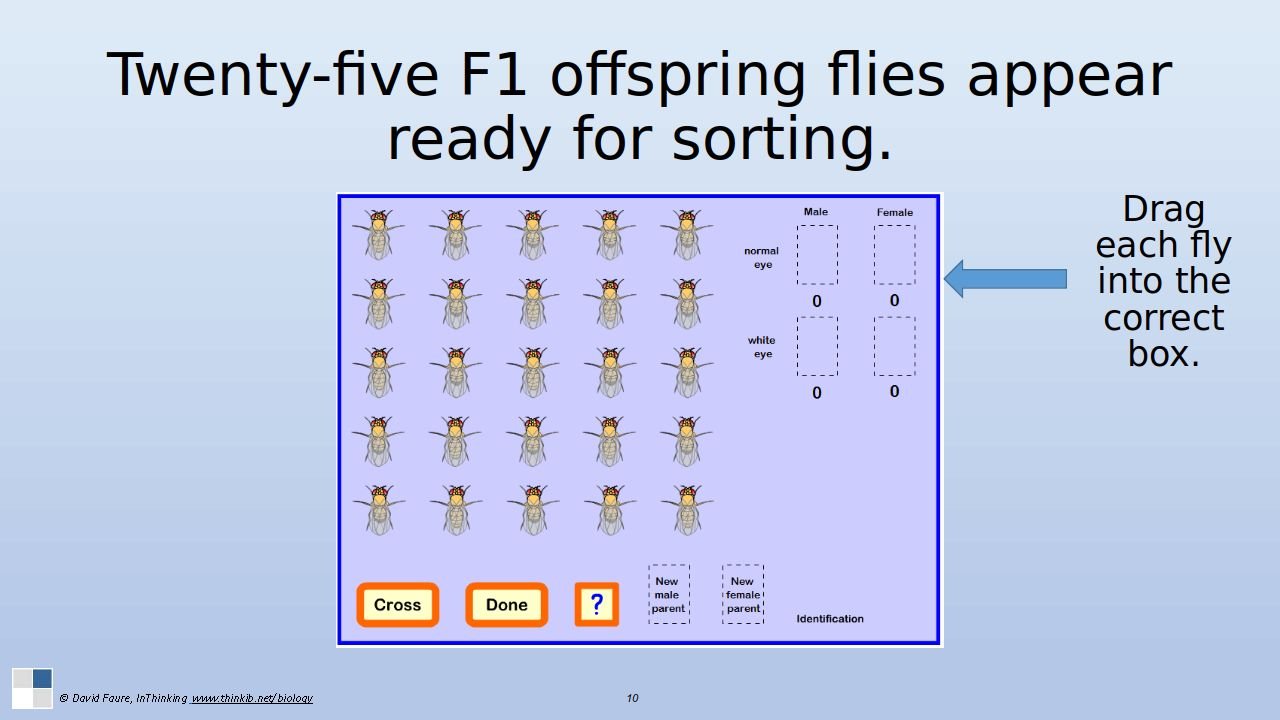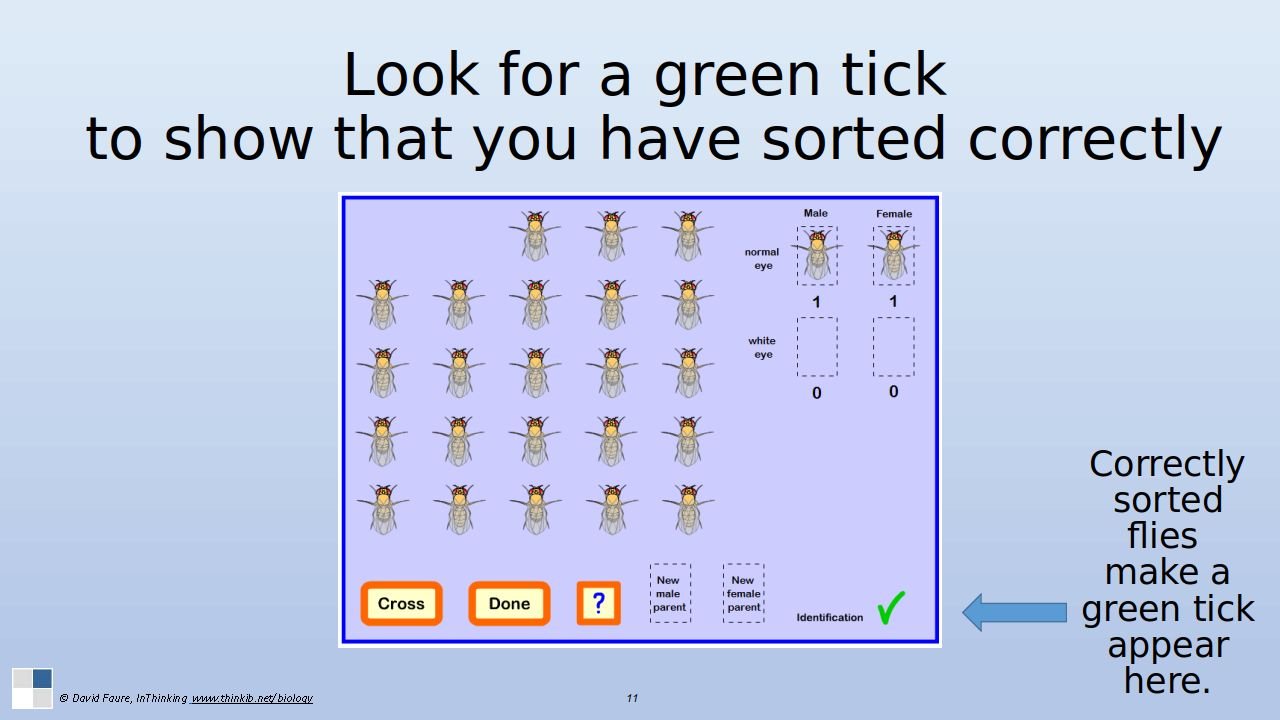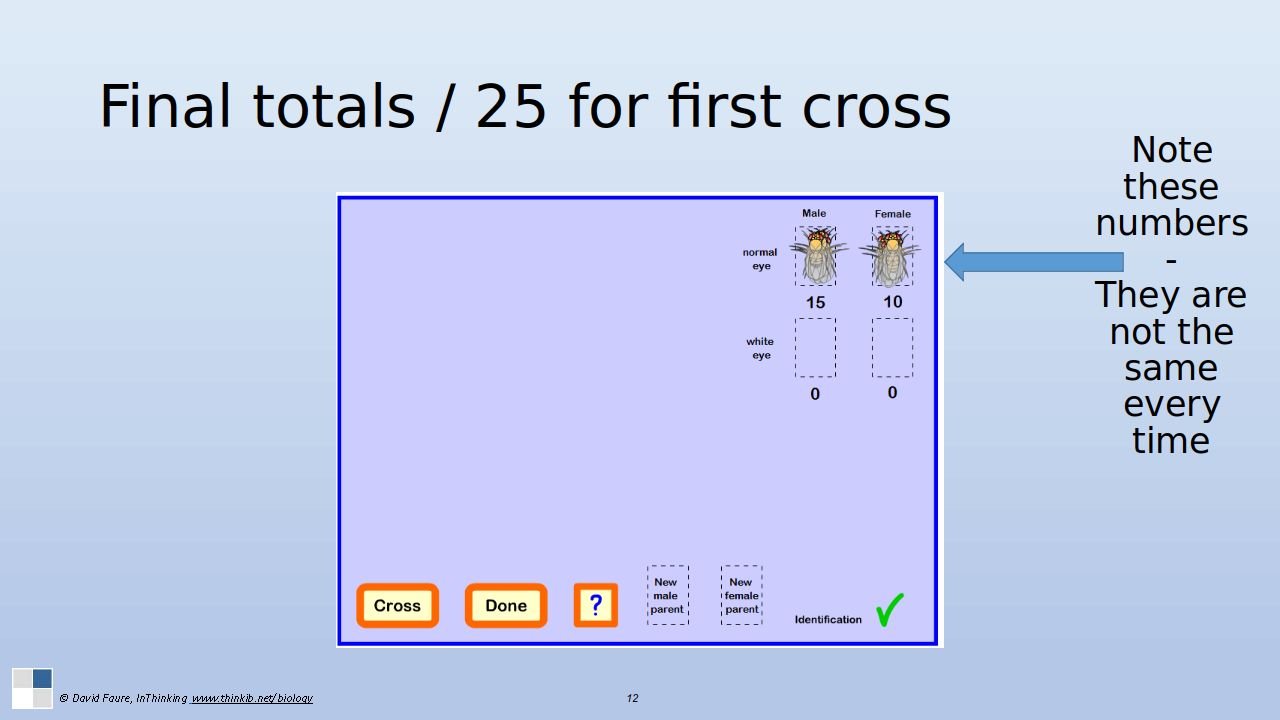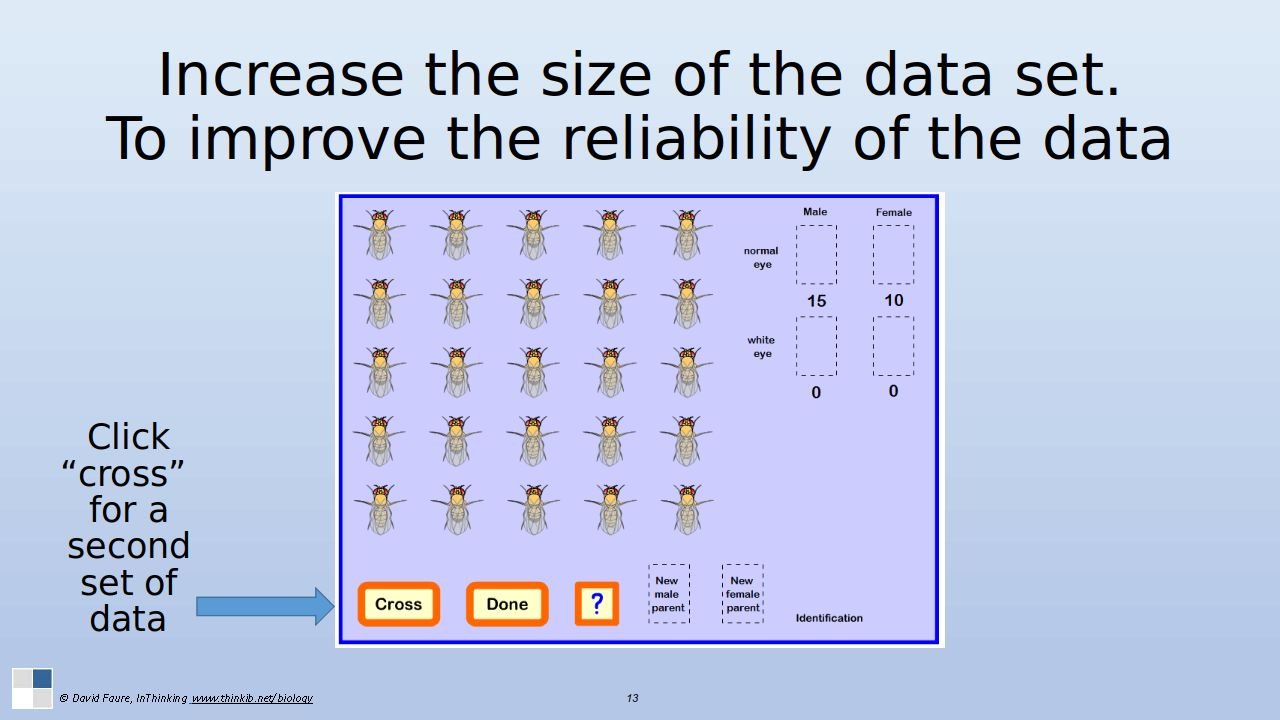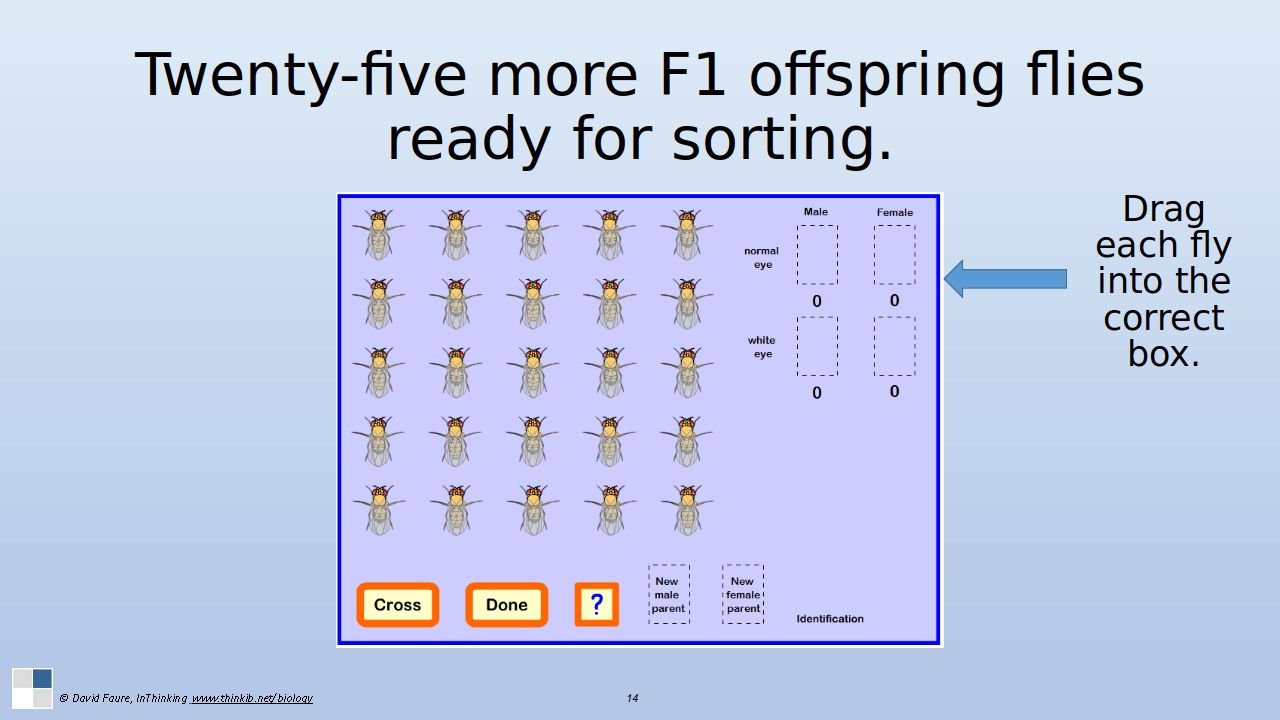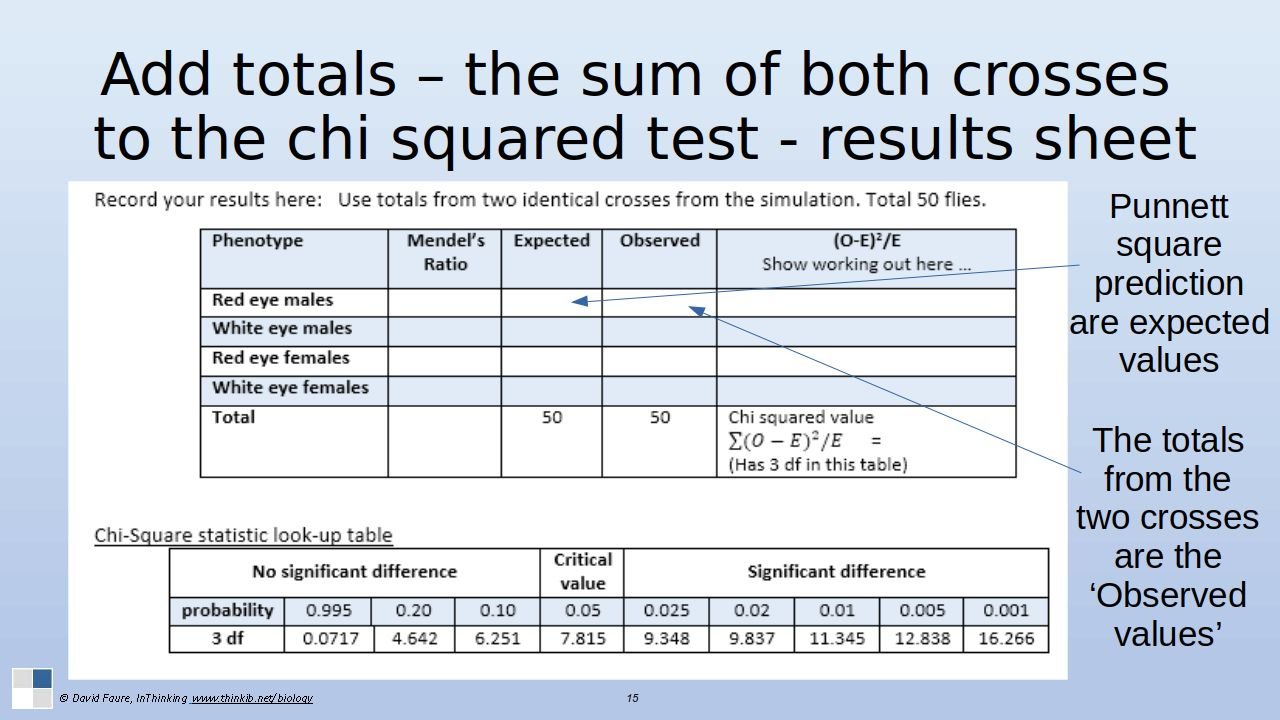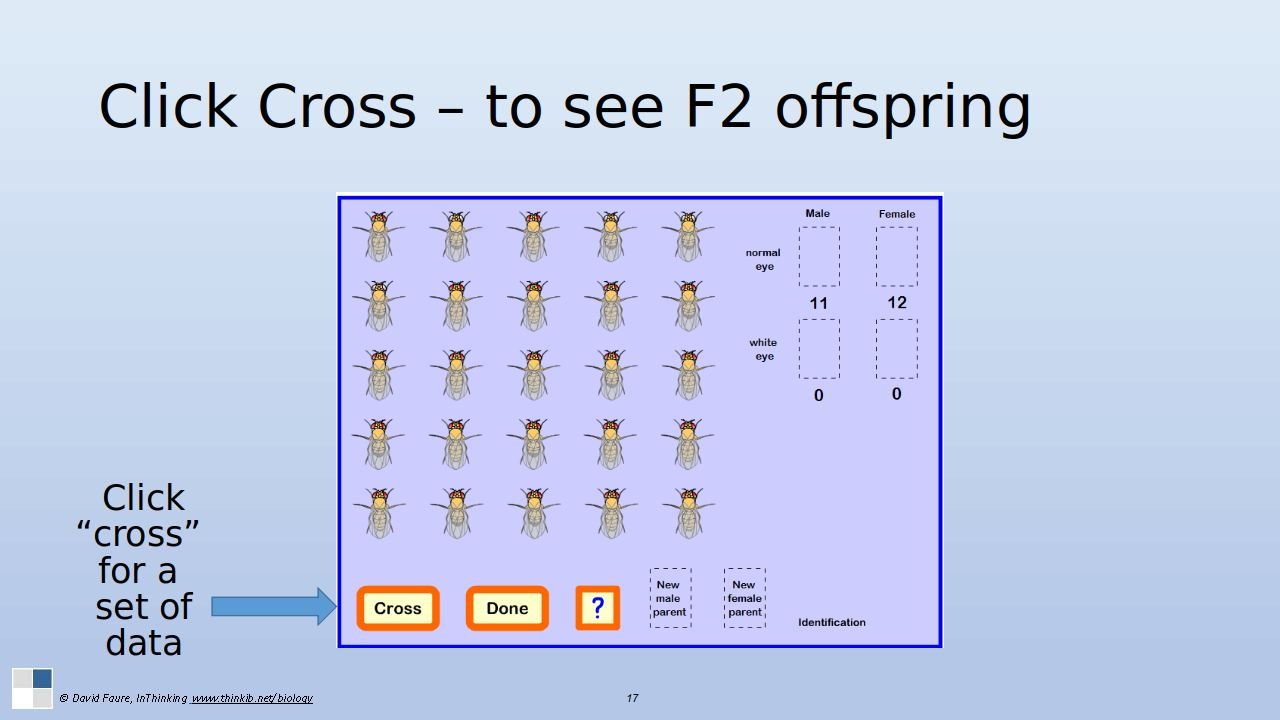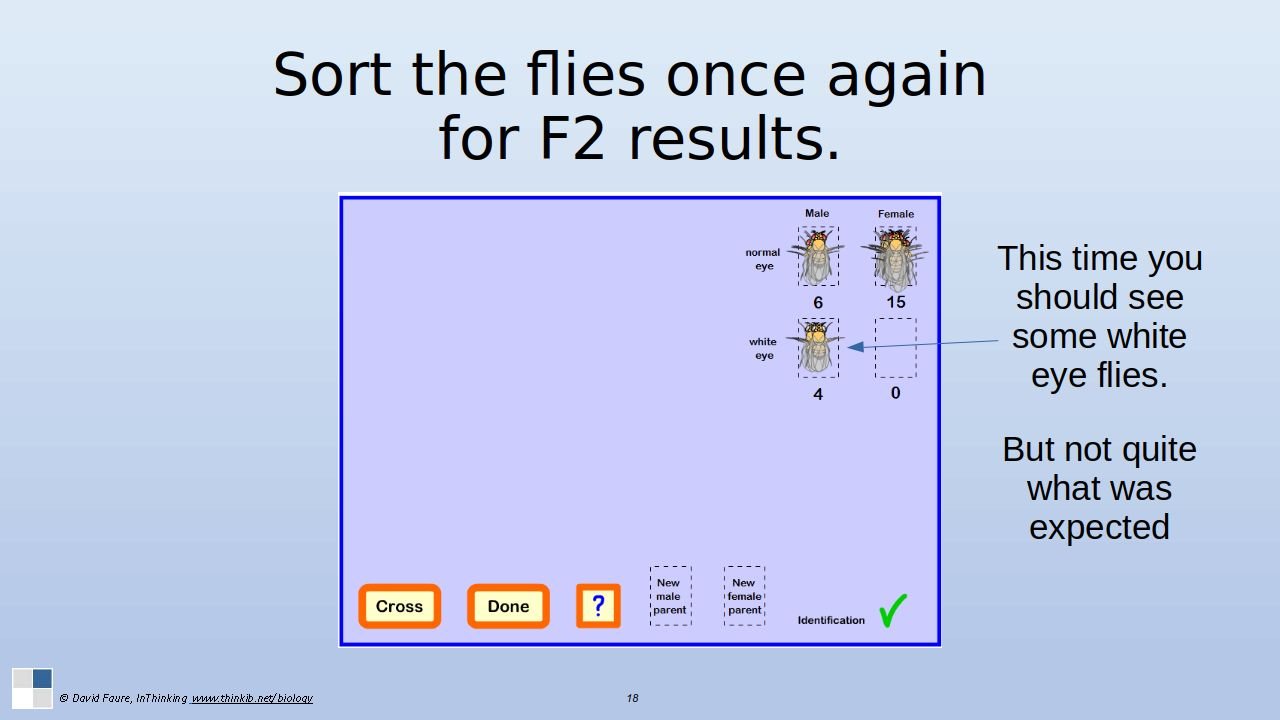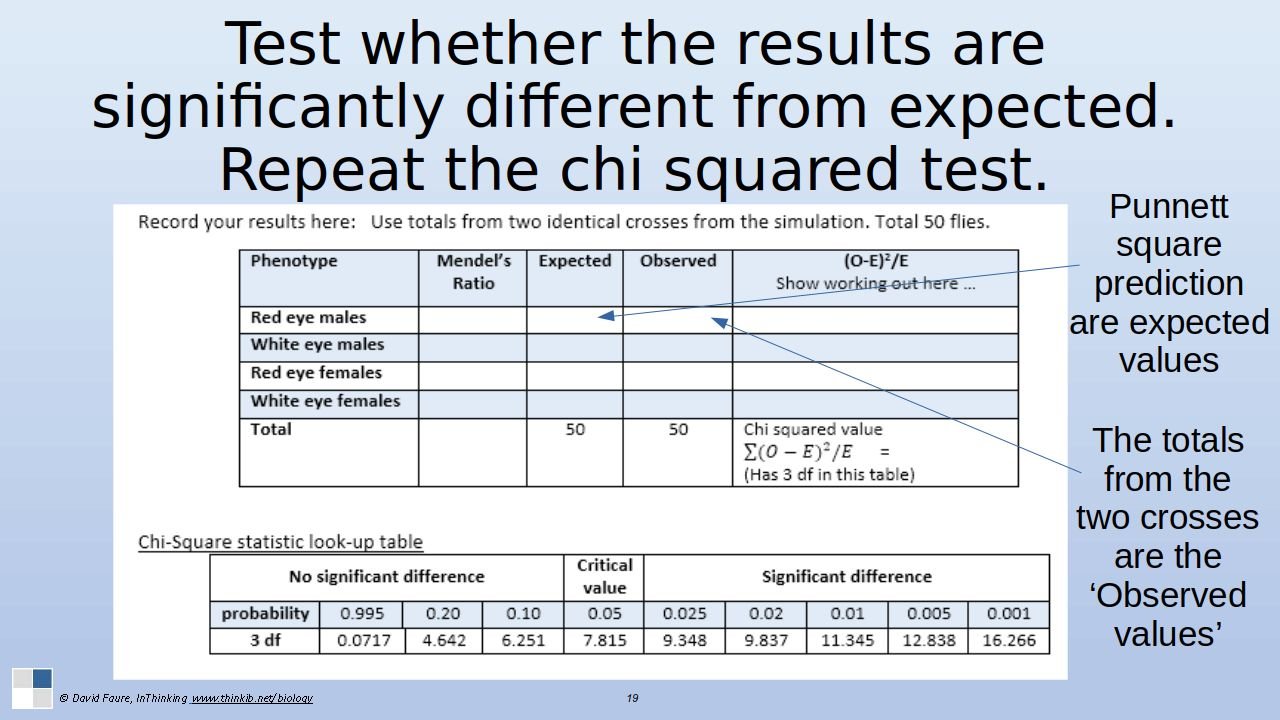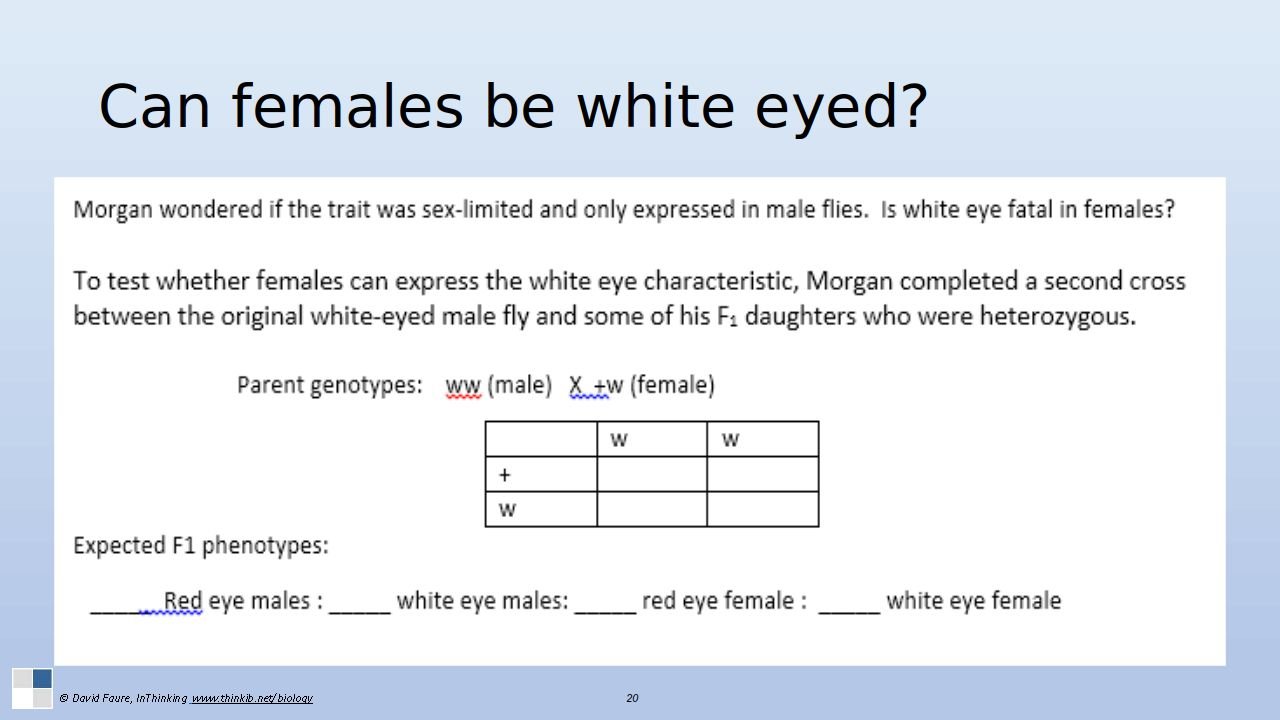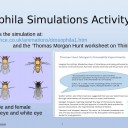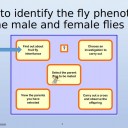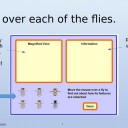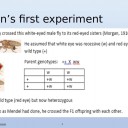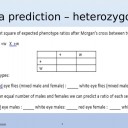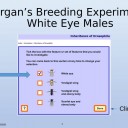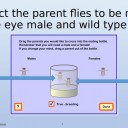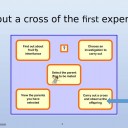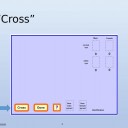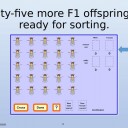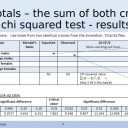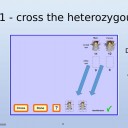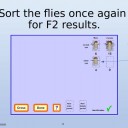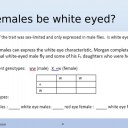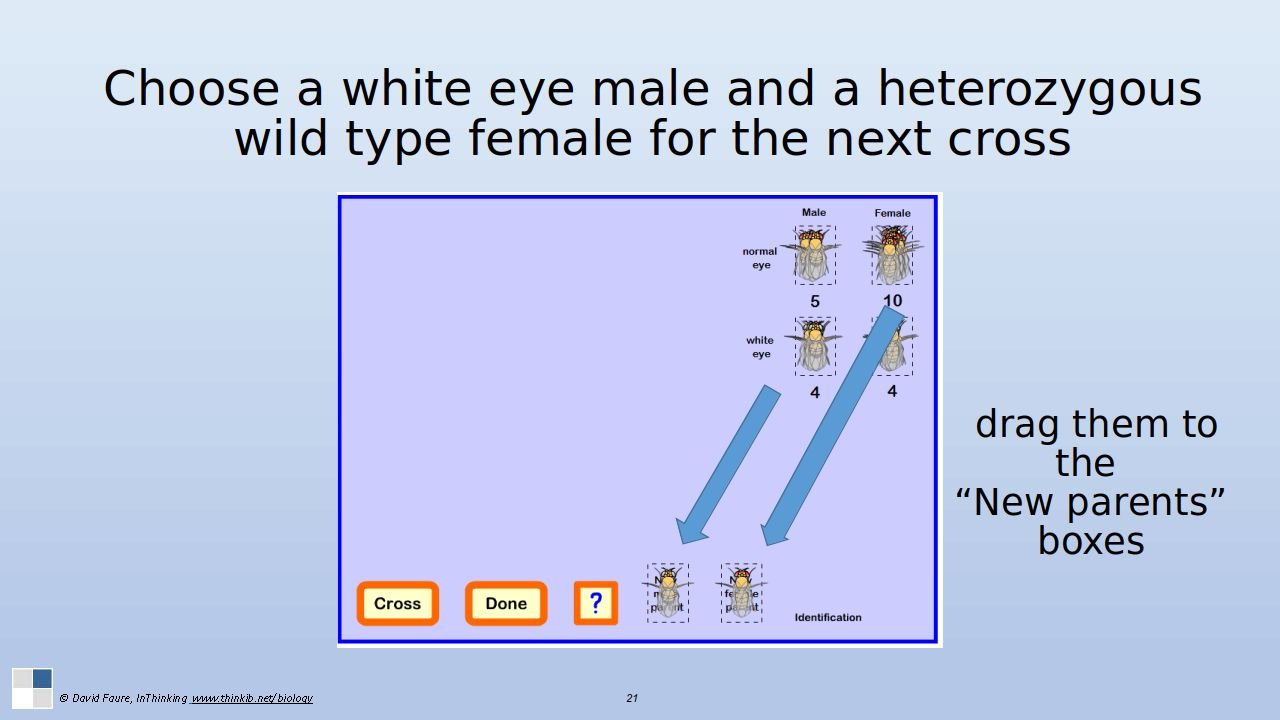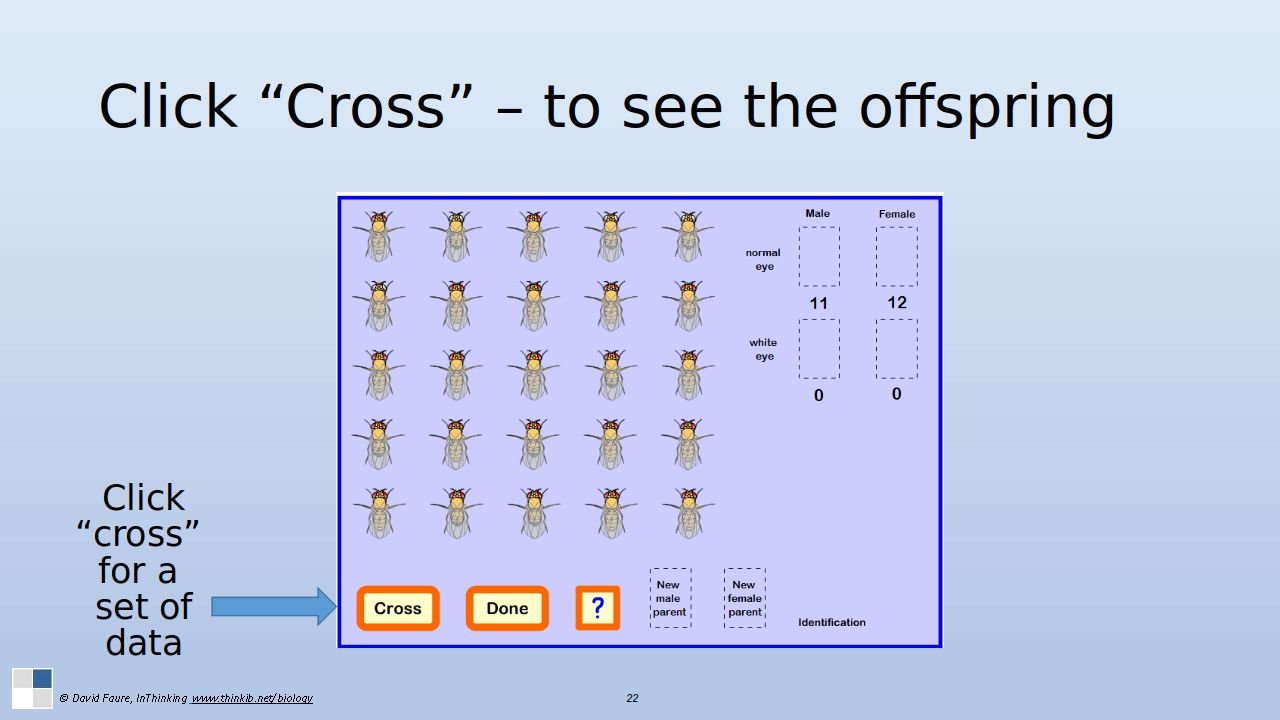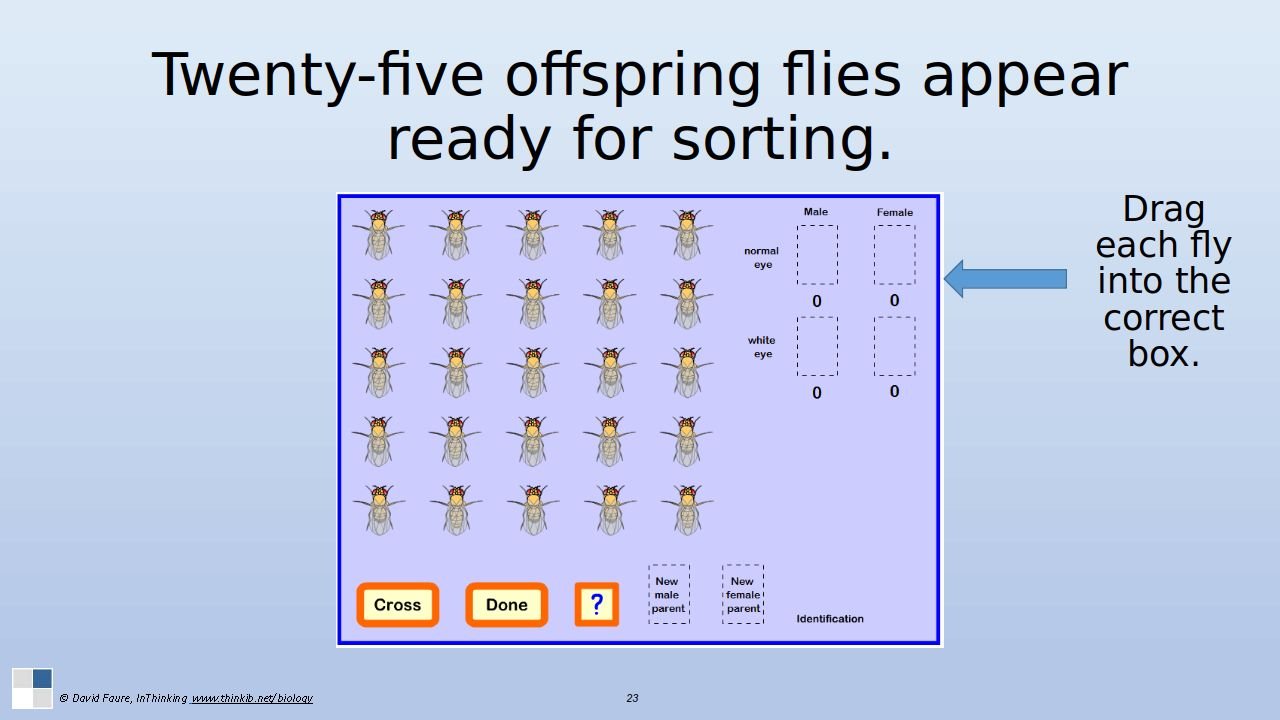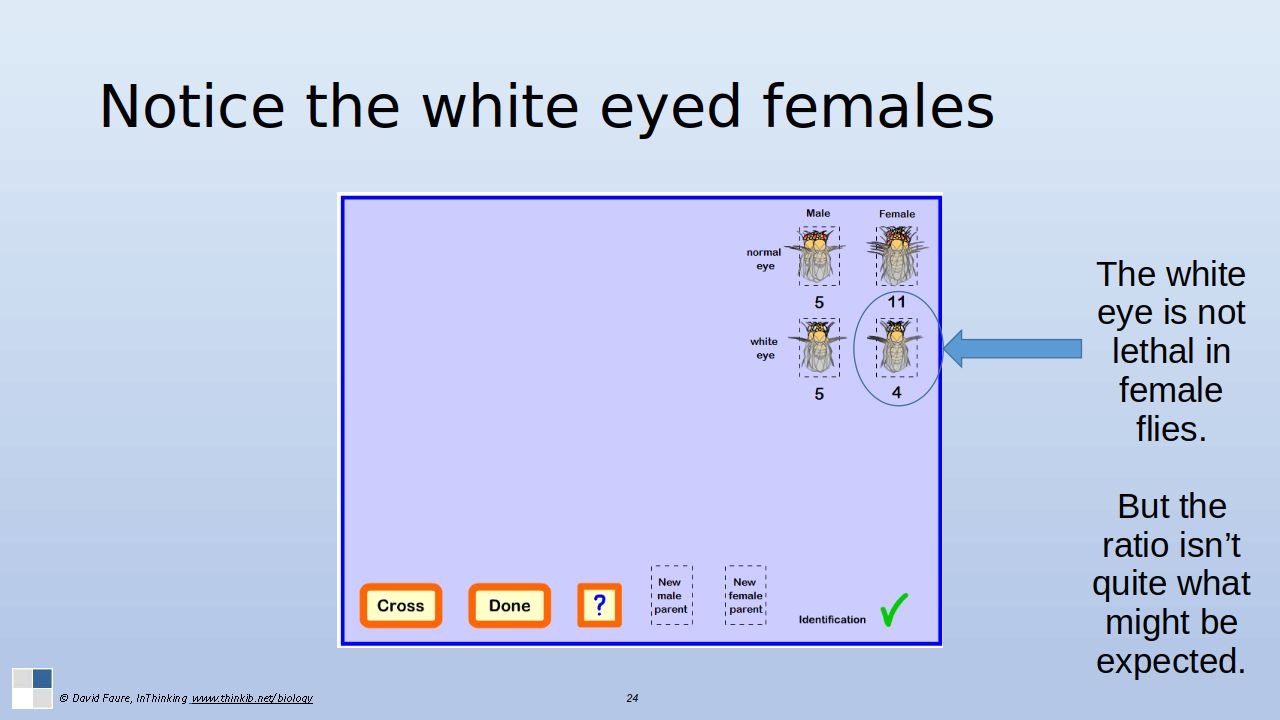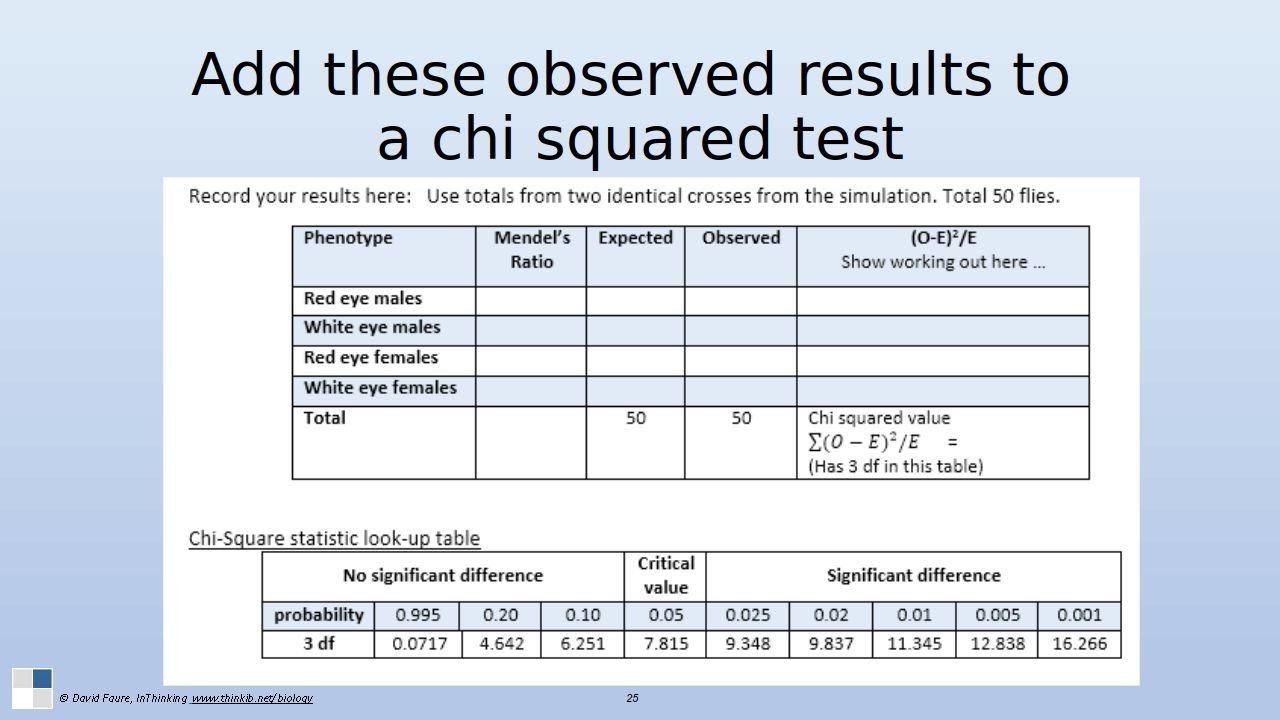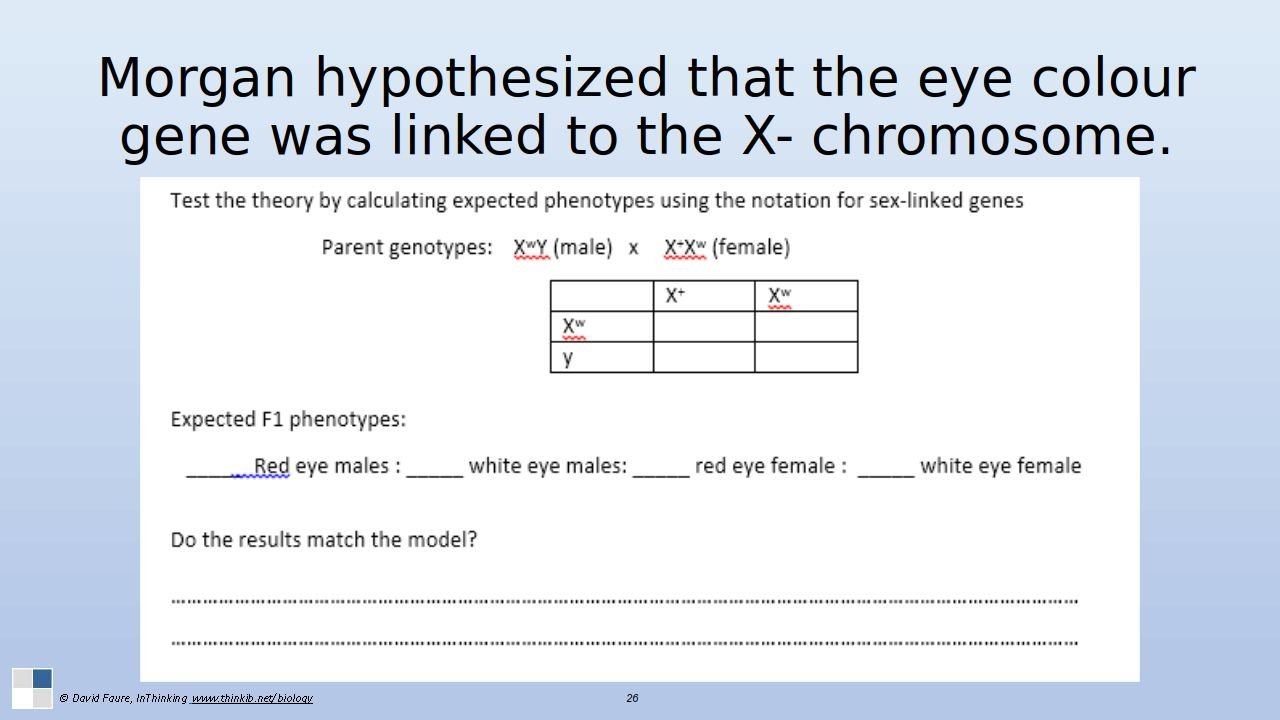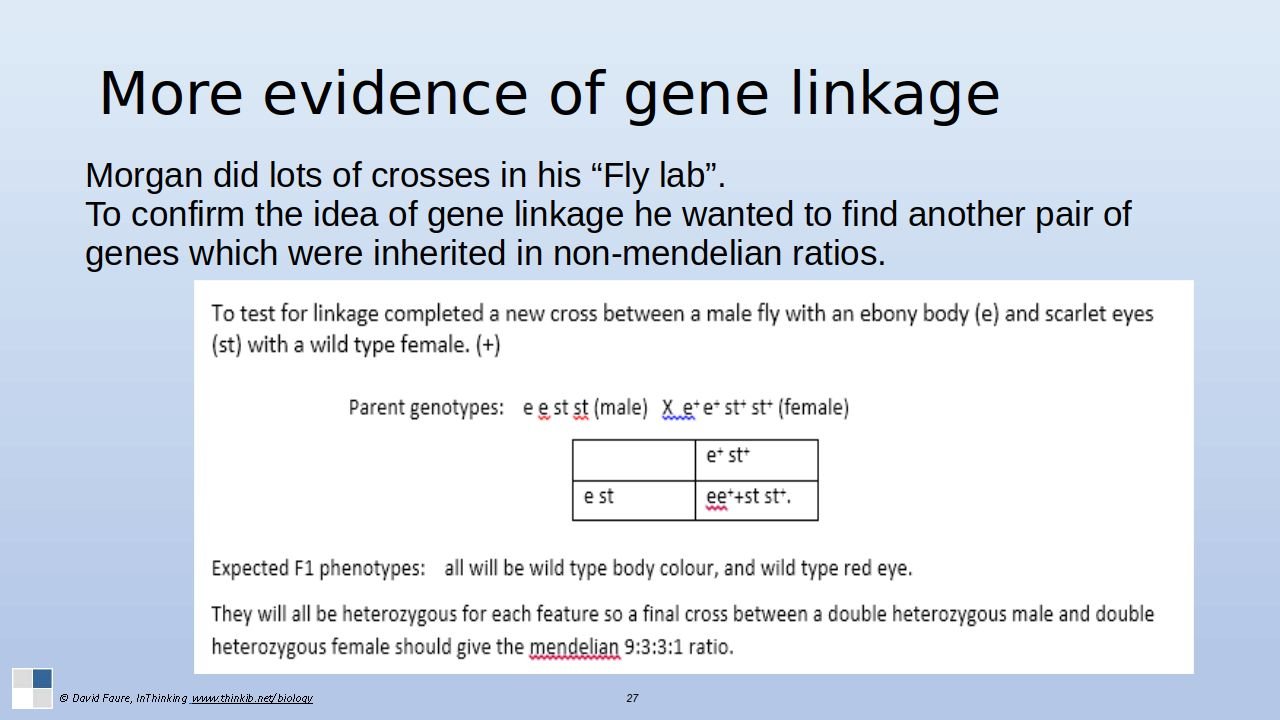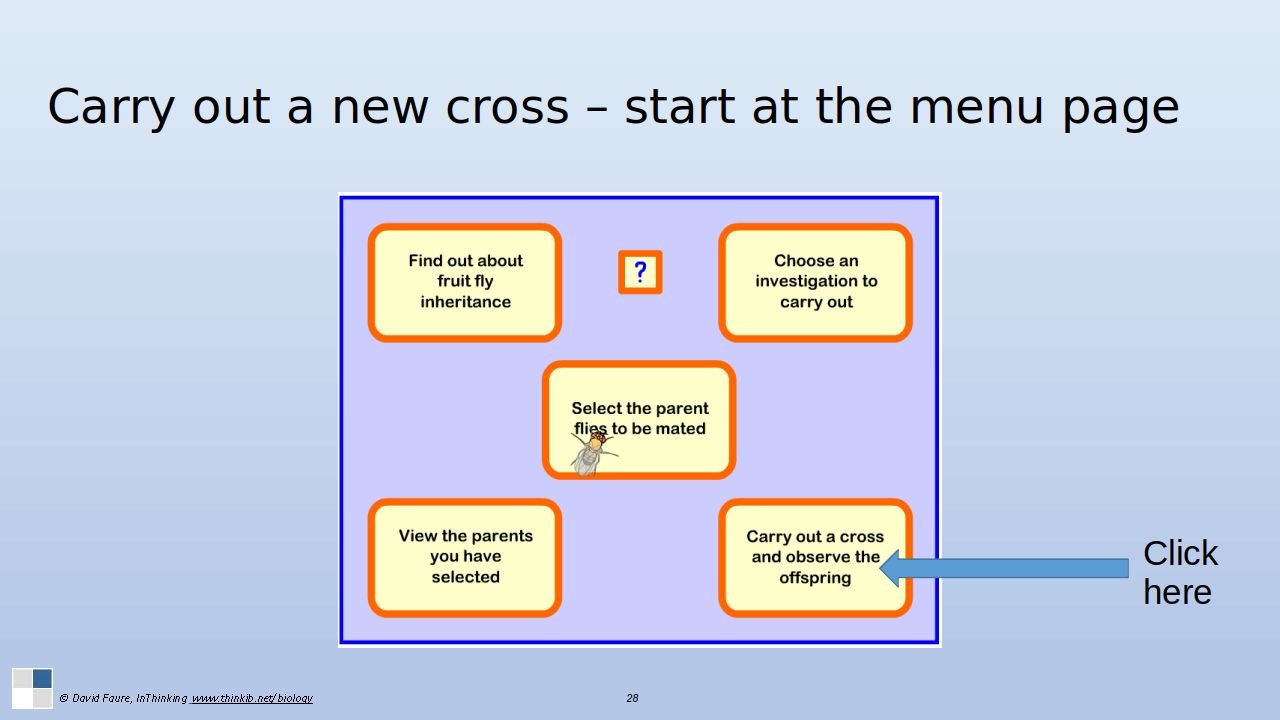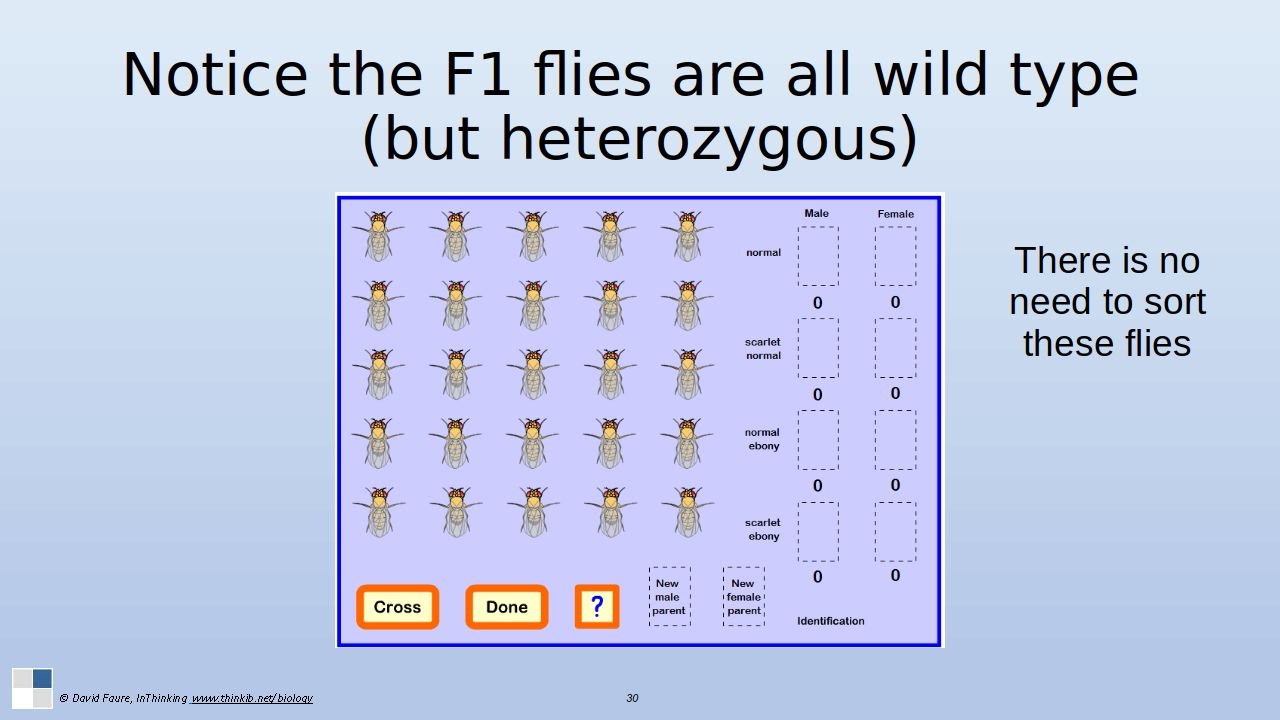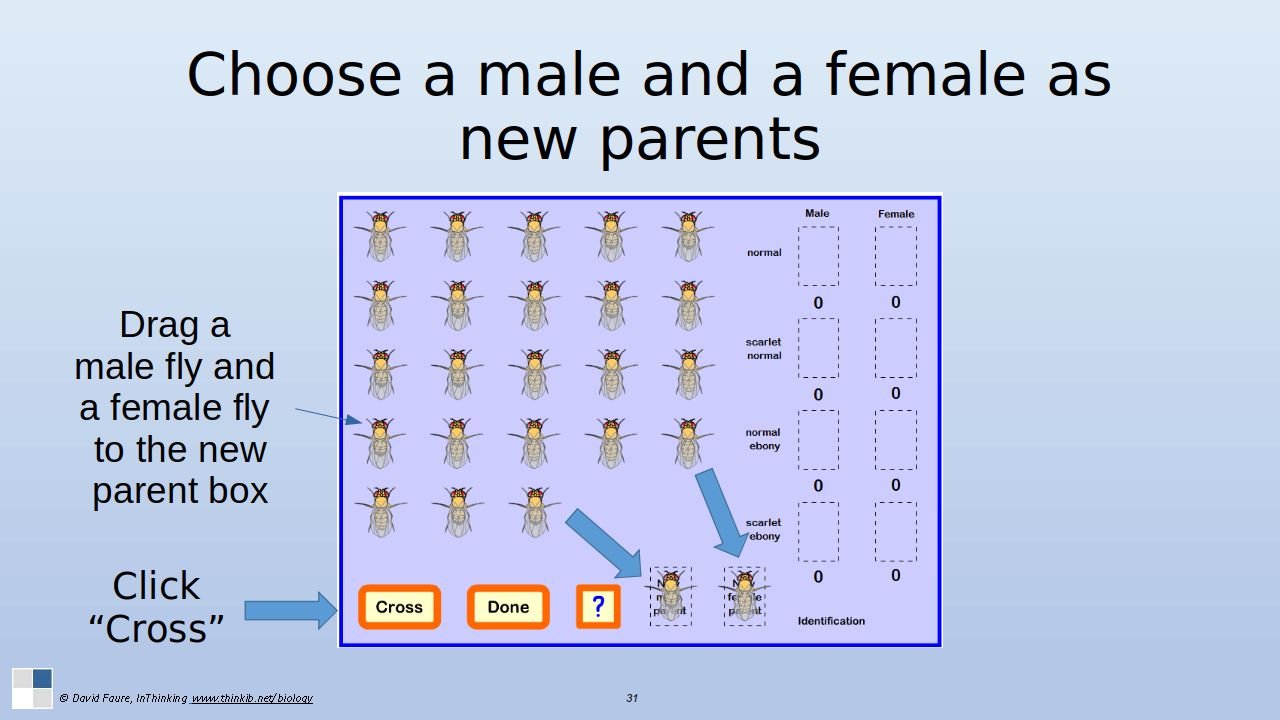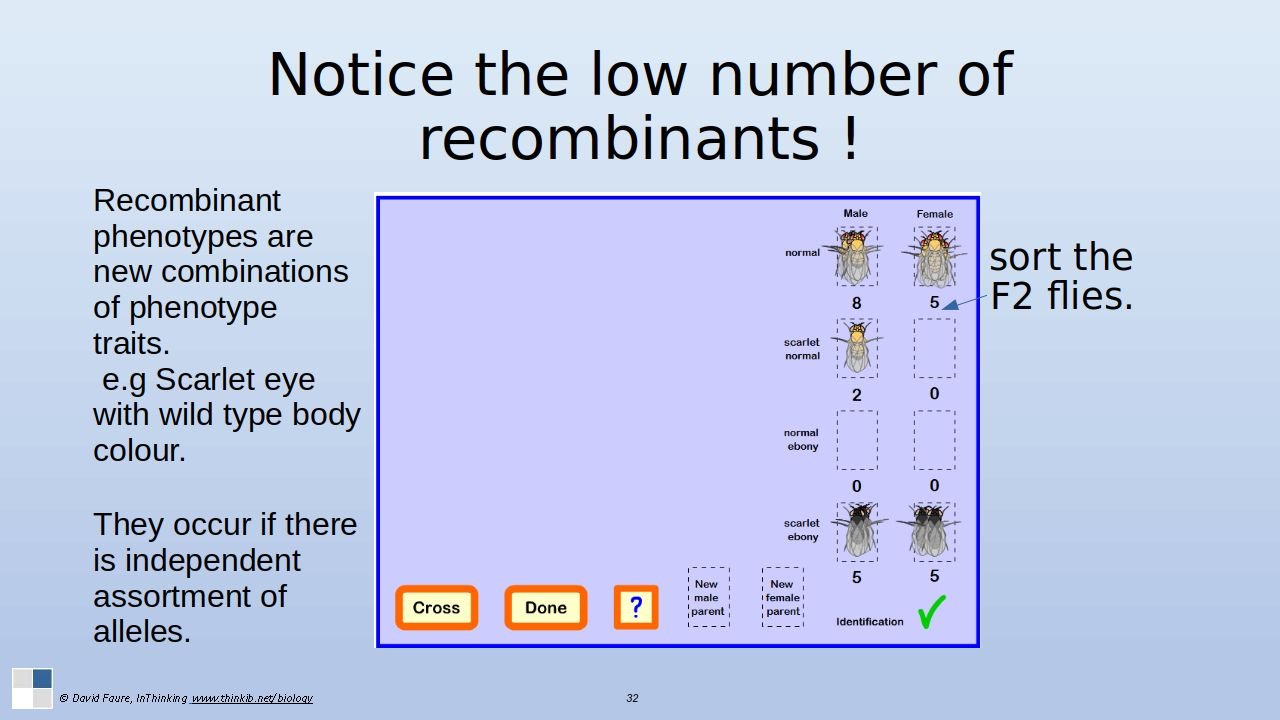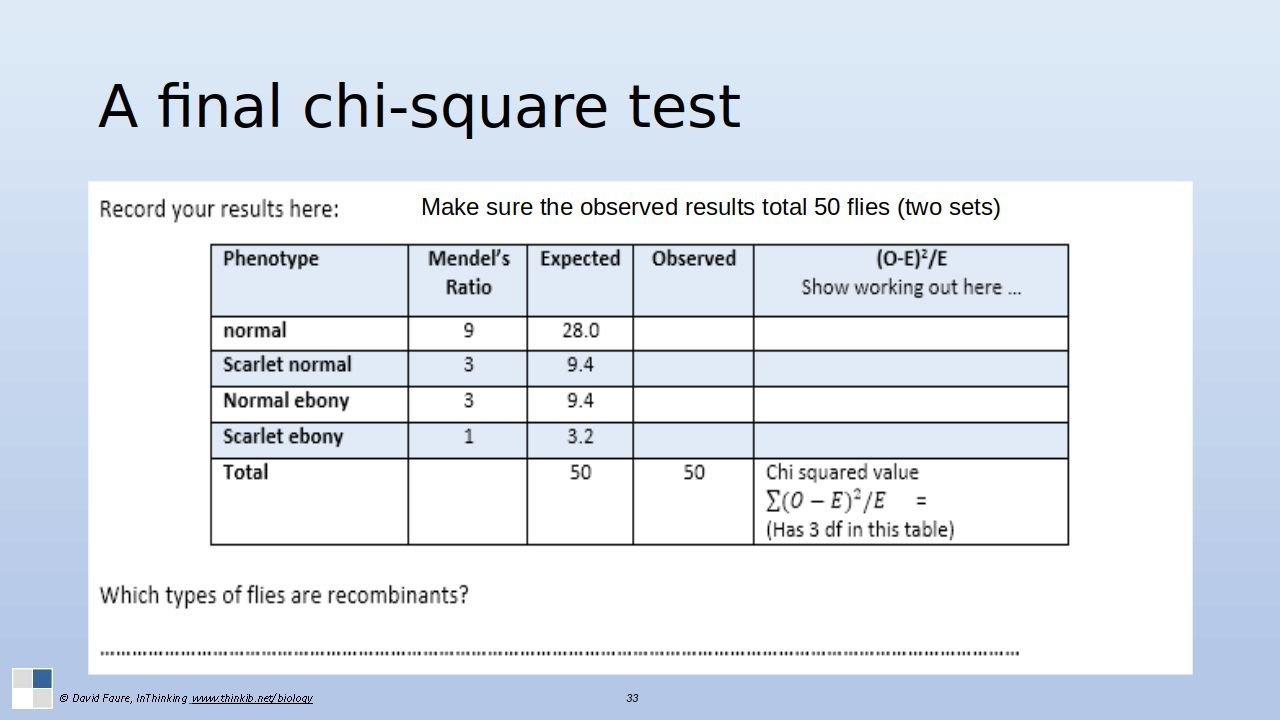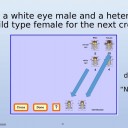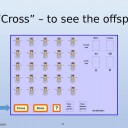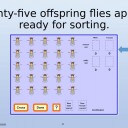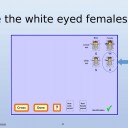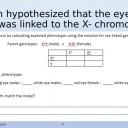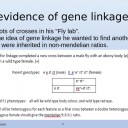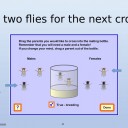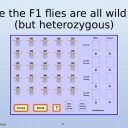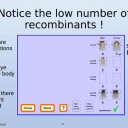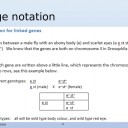Gene Linkage 2
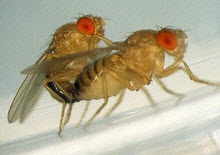 In this activity students use an online fly lab to repeat some of the experiments which helped Thomas Hunt Morgan in the discovery of linked genes, and the recognition of the role of chromosomes. Students learn that sometimes alleles are not independently assorted. Drosophila eye colour is one example. The connection between parent phenotypes, F1 phenotypes and recombinant genotypes is illustrated using historical experiments. Linkage notation is also introduced.
In this activity students use an online fly lab to repeat some of the experiments which helped Thomas Hunt Morgan in the discovery of linked genes, and the recognition of the role of chromosomes. Students learn that sometimes alleles are not independently assorted. Drosophila eye colour is one example. The connection between parent phenotypes, F1 phenotypes and recombinant genotypes is illustrated using historical experiments. Linkage notation is also introduced.
Lesson Description
Guiding Questions
Explain this prediction, “The association of chromosomes in pairs and their subsequent separation during [meiosis] may be the physical basis of the Mendelian law of heredity.” Sutton, W. S. 1902.
Why did it take Thomas Hunt Morgan eight years of fly crossing experiments before he could be confident that his evidence supported his idea that alleles can be linked on chromosomes?
Activity 1 - Simulated breeding experiments with Drosophila
These slides give a step by step guide to the first part of the activity on the Drosophila experiments of Thomas hunt Morgan.Use the animation below and the worksheet ![]() The discovery of linked genes - Morgan 1910 below to work through Morgan's first experiments with white eyed Drosophila.
The discovery of linked genes - Morgan 1910 below to work through Morgan's first experiments with white eyed Drosophila.
Use this online simulation with the slides to carry out the experiments. ![]() http://www.sciencecourseware.com/Drosophila.Javascript.lab
http://www.sciencecourseware.com/Drosophila.Javascript.lab
This is the best alternative found so far this activity. It has lovely detailed representations of the Drosophila varieties.
Keep a record of the results of the simulation experiments on this worksheet; ![]() The discovery of linked genes - Morgan 1910. Answer the questions on the worksheet.
The discovery of linked genes - Morgan 1910. Answer the questions on the worksheet.
Does the data collected support the idea that inheritance of sex and of other genetic traits depends on the chromosomes?
Activity 2 - Black body and vestigial wings in Drosophila
Continue using the online simulation from Activity 1 to carry out another experiment with Drosophila.
Two mutations which Thomas Hunt Morgan worked with were Vestigial wings and Black body Drosophila traits.
In these experiments it was usual to breed a wild-type fly with a fly true breeding for both mutations to produce a heterozygous fly. This heterozygous fly has one allele for wild type and one mutant allele for each trait. e.g. vg+vg bl+bl
The next cross would be a "test cross" - mating the heterozygous fly with the homozygous recessive fly.
vg+vg bl+bl X vg vg bl bl
This cross could give a Mendelian ratio of fly phenotypes if both the genes are unlinked, (1:1:1:1).
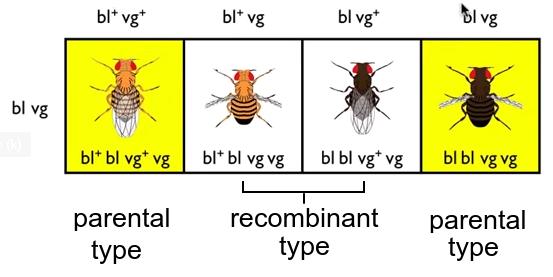
What Morgan found was that there was not a 1:1:1:1 ratio as Mendel would predict if the genes are independently assorted.
Morgan didn't find zero recombinants either as you would expect if the genes are totally linked on the same chromosome.
What they found was that over 83% of the flies were the parental types, and 17% were recombinant.
This is evidence for linkage, but it is also evidence for crossing over.
Follow the step by step instructions to carry out the simulation Drosophila breeding experiment on this worksheet; ![]() Black body and vestigial wing Drosophila experiment. Answer the questions on the worksheet.
Black body and vestigial wing Drosophila experiment. Answer the questions on the worksheet.
Further reading
Morgan’s Work on Drosophila | Genetics
A good short outline of this experiment written by K.Shivangi on Biological Discussions
1910 Morgan
Nice details about a whole range of genetic discoveries from the Genome News Network. In 1999 the whole Drosophila genome was sequenced, a year before the human genome.
Activity 3 - A short intro to linkage notation
If this is the first time students have seen linkage notation then the following slides will be some help.
In this example two genes show complete linkage, and it is assumed that no crossing over occurs.
Extension Activity - Video walkthrough of a breeding experiment with Drosophila
This video from Bozeman Science explains Morgan's experiments breeding Vestigial wings and Black body DrosophilaThis heterozygous fly has one allele for wild type and one mutant allele for each trait. e.g. vg+vg bl+bl
A "test cross" - is done, mating the heterozygous fly with the homozygous recessive fly.
vg+vg bl+bl X vg vg bl bl
This cross could give a Mendelian ratio of fly phenotypes if both the genes are unlinked, (1:1:1:1) but Morgan and his team found that it didn't.
This is the simulation that the video is based on. It uses Flash which makes viewing in school problematic, but if you wish to try click the link. ![]() http://www.sciencecourseware.com/Drosophila.Javascript.lab
http://www.sciencecourseware.com/Drosophila.Javascript.lab
Teachers' notes
This activity is designed to illustrate Morgan's discovery of non-Mendelian ratios in his work on Drosophila flies and to give students another opportunity to use the Chi-squared test in the analysis of the results from Drosophila breeding simulations.
I have tried to include a few simplified references to the original work of Morgan and his team in these activities as it's good preparation for university if students to see extracts from these papers.
Activity 1 Takes students step by step through a simulation to reproduce the work of Morgan in experiments with white eyed male and female flies. They develop the skill of using chi squared tests of goodness of fit to evaluate whether evidence from genetic experiments actually supports an hypothesis or not. Students will also learn to predict phenotype ratios, recombinant phenotypes, parental phenotypes and to identify gene linkage when it appears in data from di-hybrid genetics experiments.
Activity 2 The worksheet outlines the story of another genetic experiment carried out on Drosophila flies by Thomas Hunt Morgan in the USA. He was the first to find conclusive experimental proof of gene linkage and his team later went on to map the positions of genes on chromosomes before winning the Nobel Prize.
There is a wide range of Drosophila activities possible using this animation and so many students could test other hypotheses using the chromosome map from activity 2.
It would be worth pointing out the international nature of Biology, but these experiment really nicely illustrate the nature of scientific discovery. The difference between Sutton's observations and Morgan's experimental hypothesis testing, are a great example.
Activity 3 This is very short, but it includes a couple of slides which will help to introduce students to linkage notation, which is sometimes seen in exams.
Extension activity (4) is really a repeat of Activity 1 in the form of a Youtube video. The explanation of linkage and these examples could make a great homework, follow up task.
I'm working on some model answers which will be seen on this page: Gene linkage 2 - model answers
Extra reading!
There's a nice blog post outline of the work of Morgan and his team on this area of genetics here
Genetic reductionism, part I -- the path from broad to narrow? By Anne Buchanan
http://ecodevoevo.blogspot.com/2010/03/genetic-reductionism-part-i-path-from.html
I have left links to the old slides here, just in case some teaches are still using the flash files.
![]() http://www.kscience.co.uk/animations/drosophila2.htm
http://www.kscience.co.uk/animations/drosophila2.htm
Morgan fly lab further instructions Carousel gallery

 IB Docs (2) Team
IB Docs (2) Team


